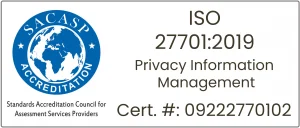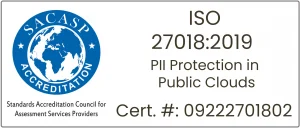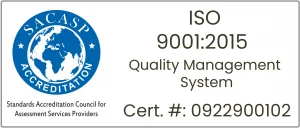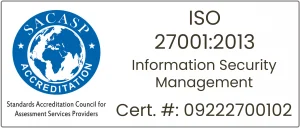The Compensation Scheme is essential for protecting consumers’ interests. Financial institutions must provide comprehensive information regarding their Single Customer View systems, marking eligible deposits, and Continuity of Access systems to FSCS to successfully carry out this mandate.
These reports are required within three months of receiving permission to accept deposits or promptly upon request by the FSCS or the PRA. Moreover, firms must notify the PRA and FSCS within three months of any material changes in their SCV, marking, or CoA systems, ensuring compliance from the firm’s governing body.
This detailed guide will delve into the complexities of FSCS SCV Effectiveness Reporting, which is a necessary obligation for authorised deposit takers. Let us look at the purpose of these reports, the essential components they include, and the importance of submitting them to FSCS and the Prudential Regulation Authority. Understanding these principles allows financial institutions to achieve regulatory compliance while maintaining the trust of their depositors.
Understanding FSCS SCV Effectiveness Reporting
The SCV Effectiveness Report has three key components:
- SCV Effectiveness Report: Illustrates the potential of the financial institution’s SCV system to accurately identify and link customer accounts.
- Marking Effectiveness Report: Evaluates how accurately and comprehensively the institution has marked eligible deposits.
- Continuity of Access Report: Shows how the FI can continue to access customer data and provide services in the case of a company failure.
The SCV Effectiveness Report
It is a comprehensive document that requires various components and data points to be filled in for ensuring the accuracy and timeliness of reporting, which is of utmost importance for compliance and regulatory purposes.
Part 1: Contact Details
- Firm Details: Requires the deposit taker to provide their exact Deposit Taker Name as listed in the Financial Services Register. Additionally, they are asked to provide their Firm Registration Number.
- SCV Contacts: The deposit taker must list their Compliance Officer (if applicable) and the Primary Contact Name, along with their Telephone Number, Email Address, and Mailing Address. Furthermore, details of the Secondary Contact Name, Telephone Number, and Email Address are also required.
These details are essential for establishing clear communication channels and ensuring that relevant parties can be contacted promptly when necessary for matters relating to the Single Customer View SCV system effectiveness report.
Part 2: Detailing the reason for the submission of the SCV Effectiveness Report
This allows firms to specify the reason for the submission via various checkboxes provided, including whether it was requested by the PRA or FSCS as part of:- SCV Verification
- Material change in the SCV system
- An ad hoc request
- A newly authorised firm.
Part 3: Modifications or Waivers
It requires firms to detail any modifications or waivers to the Depositor Protection Part of the PRA Rulebook, if applicable.
Part 4: SCV System Information
This section forms a crucial part of the SCV Effectiveness Report. It includes various components aimed at providing a comprehensive overview of the deposit taker’s Single Customer View (SCV) system and its implementation, ensuring compliance with the PRA’s SCV requirements.
- File Generation: The deposit taker must provide the date when the last full SCV file was produced and the time it takes to generate a full SCV file. Additionally, the date of the last full Exclusions View file production and the time for generating it must be provided.
- System Information: Demands a detailed description of the SCV system and its implementation. This encompasses details on the software or systems used for SCV file production, management of specific account types or data sets by third parties, source, date, and rate of exchange rates applied to SCV and Exclusions View files, provision of keys and codes for SCV and Exclusions View files, and processes enabling identification of eligible deposits and accounts held on behalf of beneficiaries.
- The Compensation Limit: Requires the confirmation of the applied compensation limit and an explanation of how the SCV system identifies any portion of an eligible deposit that exceeds the coverage level for compensation.
- Procedures and Controls: Necessitates a description of the procedures and controls in place regarding the production of SCV and Exclusions View files. This includes details on secure storage and management of key person dependencies.
- Testing of the SCV System: Requests a description of the testing undertaken to assess the robustness of the SCV system. This involves various aspects such as preparation of the SCV in stressed scenarios, reconciliation with core systems, and testing to prevent duplicate entries
- Dependencies on Third Parties and Exclusions View File Production: Stipulate the provision of information regarding third parties relied upon for SCV file production, as well as details of the exclusion file production process if different from the SCV.
- Treatment of Legally Dormant Accounts: Involves complying with the Dormant Banks and Building Societies Accounts Act 2008, which defines such accounts as those with no transactions for fifteen years. Financial institutions may transfer the balance of these accounts to a reclaim fund for dormant accounts, as mandated by the Act.
- Ongoing Maintenance: Addresses the deposit taker’s plans to upkeep the SCV system. This involves maintaining an accurate list of keys or codes for the SCV and exclusions, implementing processes to verify member eligibility, seeking relevant modifications and waivers when needed, and integrating new products and systems into the SCV system.
- Ongoing Assurance: The board of directors’ method of ensuring the SCV system’s compliance with the PRA’s requirements is to be indicated. They must outline how they will guarantee the continued satisfaction of the PRA’s SCV requirements. If audit assurance work is planned, details on the dates and scope of the intended work should be provided.
- Audit Section: The deposit taker needs to state whether the SCV Effectiveness Report has undergone review by external auditors, and if so, provide the findings of that review. Any attached documents should be clearly labeled with the Firm name, FRN number, SCV primary contact name, and document title.
- Material Changes: Lastly, the section concludes with a requirement to declare any material changes to the SCV system since the previous SCV Effectiveness Report.
This comprehensive review of the SCV system and its various components, alongside an emphasis on accuracy and completeness, ensures that compliance with the PRA’s SCV requirements is thoroughly documented and communicated.
Part 5: Transmission Method and Security
- SCV & Exclusion Transfer Method: Outlines the methods for sending the SCV file and the necessary security measures. The options for transmitting the SCV file include web portal upload (FSCS preferred option), SFTP, and Connect Direct (if an existing connection is already in place with FSCS).
- File Encryption: Options such as PGP or None, relying upon security of the file transfer method. The latter option requires a description of the proposed transmission security controls.
Part 6: SCV and Exclusions View File Information
- SCV and Exclusions View File Format: Enables you to specify the format of your SCV and Exclusions View files, allowing you to choose between CSV (FSCS preferred option), TXT (FSCS preferred option), XLS(X) (Excel), or another format as applicable.
- SCV and Exclusions View File Names: Here, you will provide details of your intended file names, ensuring compliance with FSCS preferred file names or providing descriptions of proposed file names as required.
- Number of SCV and Exclusions View Files: This is where you confirm the number of files that make up your SCV submission and Exclusions View submission as per the specific requirements of the FSCS.
- SCV and Exclusions View Structure: Confirming that the data fields in your SCV and Exclusions View files are supplied using the exact order and data types as required by the Deposit Protection 12.9 and the FSCS Guide to SCV, respectively.
- SCV and Exclusions View File Footer: It pertains to the requirement of a file footer to mark the end of each file, and you either confirm your proposed file footer format or detail your proposed file footer.
- SCV and Exclusions View File Column Delimiter: This section focuses on indicating the proposed column delimiter to be used in the files, ensuring that characters used as a column delimiter are not used within the data values of the files.
- SCV and Exclusions View Row Delimiter: Similar to the column delimiter, this part involves specifying the proposed row delimiter to separate each row of data in the files, while ensuring that characters used as a row delimiter are not used within the data values of the files.
Part 7: Number of the SCV files & Exclusion Files
- SCV File
This includes providing the exact number of unique SCV IDs in tables A, B, and D, as well as the number of unique Account Numbers in table C. Additionally, the total number of records in table C needs to be specified, considering any customers with multiple accounts or joint accounts. Finally, the sum of the Aggregate Balances on the SCV file in sterling currency is required. - Exclusions View File
- Number of Unique SCV IDs, Account Numbers, and Records: Requires the exact number of unique SCV IDs in tables A, B, and D of the Exclusions View file, along with the number of unique Account Numbers in table C. Additionally, it asks for the exact number of records in table C, considering customers with multiple accounts or joint accounts.
- Breakdown of Exclusion Types: Asks for a breakdown of the number of records in table C related to each type of exclusions, including accounts not absolutely entitled, legally dormant accounts, accounts subject to legal disputes, and accounts subject to financial sanctions.
- Sum of Aggregate Balances: Requests the sum of the Aggregate Balances on the Exclusions View file in sterling currency, providing a comprehensive overview of the financial details within the file.
- Accounts Not Included in SCV or Exclusion File
Suppose no accounts have not been included in either the SCV or Exclusions View file. In that case, this part seeks the number of unique Account Numbers not included and the reason for not including them, ensuring a clear explanation for any omissions.
Part 8: Account Status Codes & Product Codes
- Account Status Codes: This section requires firms to specify the account status codes used, identifying which ones are for accounts fit for straight through payout (FFSTP) and which are used for accounts that appear in the Exclusions View file. A table or a separate file with all account status codes present in the SCV or Exclusions View file should be provided. Each code’s description and whether it indicates if the account is fit for straight through payout or is an exclusion should be clearly stated.
- Product Types: Firms must detail the products of the accounts present in the SCV and Exclusions View files. The name of the product, the category to which the product has been allocated, and a description of the product are required. Every product name and type from the SCV or Exclusions View file should be included in the table or provided in a separate file.
- Bulk Account Status Codes and Products: If an abundance of Account Status Codes or Product Types makes it challenging to fit all codes in the provided spaces, the firm is requested to submit an Excel sheet populated with the complete code listings when sending in the SCV Effectiveness Report.
Part 9: Statement of Compliance
This involves a formal confirmation by the Board of Directors to confirm the Deposit Taker’s ability to provide the SCV file and Exclusions View file within 24 hours of a request, meeting Depositor Protection 12.9 requirements. The report must be signed by a designated individual on behalf of the Board of Directors, outlining their accountability, position, and signing date.
Marking Effectiveness Report
Part 1: Contact Details
Captures the basic information such as telephone number, email address, and mailing address of the deposit taker and the contacts responsible for regulatory reporting.
Part 2: Reason for submission of Marking Effectiveness Report
Includes the reasons for the submission of the marking effectiveness report, such as whether it was requested following a material change, as part of an ad hoc request, due to being newly authorised, or for another specified reason.
Part 3: Modifications or Waivers
Inquires if the firm has made any modifications or waivers to the Depositor Protection Part of the PRA Rulebook and requests details if any exist.
Part 4: Marking Information
- Identification of Eligible Deposits and Accounts: Asks for the date when the details of eligible deposits and accounts were last supplied to the FSCS or the PRA.
- System Information: Requires a description of the systems used to satisfy marking requirements and how they have been implemented, including procedures and controls.
- Testing Marking Arrangements: Asks for a description of the testing undertaken regarding the systems to satisfy the marking requirements.
- Dependencies on Third Parties: Requests the name of any third parties that the firm depends on to comply with marking requirements.
- Other Relevant Factors: Asks for any other factors relevant to the design of the systems to comply with the marking requirements.
- Ongoing Maintenance: Details plans for the regular upkeep of the marking system, including maintaining an accurate list of keys or codes, process for member eligibility checks, and strategies for pursuing necessary modifications and waivers (PRA DPR 15.7 (1c)).
- Ongoing Assurance: Requests information on the board’s measures to ensure the marking system meets PRA’s requirements. If audit assurance work is planned, it requests details of the dates and scope, aiming to gather information about any potential issues.
- Audit: Requires a statement of whether the marking systems have been reviewed by internal or external auditors and the findings of that review.
- Material Changes: Requests a statement of whether there has been a material change to the systems to comply with the PRA’s marking requirements.
Part 5: Number of Marked Deposits and Accounts
Collects the number of deposits and accounts marked as eligible in accordance with Depositor Protection 11.1 and 11.2.
Part 6: Statement of Compliance
This part involves a confirmation statement from the Board of Directors, signed by a designated individual with date, attesting that the systems comply with Depositor Protection rules 11.1 and 11.2.
Continuity of Access Report
Part 1: Contact Details
Collects the basic information about the deposit taker, including the firm’s name as registered in the Financial Services Register and the Firm Registration Number. It also captures the contact details of the Compliance Officer, Primary Contact, and Secondary Contact.
Part 2: Reason for submission of Continuity of Access Report
Requests the reason for the submission of the Continuity of Access Report, with options to indicate whether it is requested following a material change, as part of an ad hoc request, due to being newly authorised, or for another specified reason.
Part 3: Modifications or Waivers
Inquires if the firm has made any modifications or waivers to the Depositor Protection Part of the PRA Rulebook and requests details if any exist.
Part 4: Continuity of Access Information
- Date and Time of Transferring and Freezing Accounts: Captures the date of the last test of the CoA system and the time taken to transfer amounts under Depositor Protection rule 13.6 into separate accounts as well as the time taken to freeze ineligible accounts under Depositor Protection rule 13.8.
- System Information: Asks for a description of the systems used to comply with the Continuity of Access rules and how these systems have been implemented.
- Testing Arrangements: Requests a description of the testing undertaken on the Continuity of Access systems.
- Dependencies on Third Parties: Asks for the names of any third parties that the firm depends on to operate its Continuity of Access systems, whether external companies or parent/subsidiaries.
- Other Relevant Factors: Requests a description of any other factors relevant to the design of the Continuity of Access systems or to an assessment of whether those systems satisfy Depositor Protection rules.
- Ongoing Maintenance: Demonstrates plan regarding the Continuity of Access system’s continuing maintenance plan.
- Ongoing Assurance: Requests how the board of directors will examine and comply with the Depositor Protection requirements 13.4 to 13.9 to guarantee the Continuity of Access system remains compliant. Also, allows you to describe any planned audit assurance work connected to the CoA systems, including dates and scope.
- Audit: Requests a statement on whether internal or external auditors have assessed the Continuity of Access systems and their conclusions. It enables clear labelling of extra attachments.
- Material Changes: Requests for input on whether the CoA systems have changed significantly since the preceding notification, emphasising the need for informing such changes.
Part 5: Statement of Compliance
Confirms the compliance of the Continuity of Access systems with Depositor Protection rules and includes a signed confirmation by the Board of Directors.
Master FSCS SCV Reporting: Discover Macro Global's Solution
Thus, the SCV effectiveness reporting is crucial for FSCS compliance, ensuring:
- Accuracy: Impacts customer compensation effectiveness in case of deposit taker failure.
- Timeliness: Essential for prompt compensation within seven days of failure.
- Compliance of Customer Data: Ensures adherence to regulatory requirements, building trust and credibility in the financial sector.
Macro Global’s flagship solution, FSCS SCV Enterprise Suite (composed of SCV Forza and SCV Alliance), streamlines the preparation and submission of SCV files, exclusion view files and effectiveness report, to meet FSCS regulatory demands efficiently.
SCV Forza – Automated Reporting System
- Utilises AI-based computing algorithms for data-driven compliance processes.
- Leverages a SSIS-based ETL platform and efficiently orchestrates and fulfills data requirements.
- Can handle vast amounts of data, up to 50 million records, ensuring smooth data integration and comprehensive FSCS SCV reporting.
- Facilitates multi-level data validations and control procedures using AI-based fuzzy logic, preventing duplication and generating accurate SCV reports promptly in the correct format for FSCS submissions.
- Ensures data quality and compliance with ISO standards and FSCS regulatory requirements.
- Protects SCV output files with a robust encryption mechanism.
- Enable effortless FSCS compliance and significant efficiency gains through streamlined electronic submissions to RegData.
SCV Alliance’s Role in Auditing Generated FSCS Reports
- Provides extensive audit support using 175+ checkpoints.
- Identifies data formatting issues that may conflict with mandatory fields.
- Offers exception reports to update inaccurate information before submission.
- Focuses on enforcing regulatory adherence and ensuring generated reports meet FSCS reporting standards.
Let us help you simplify your FSCS SCV reporting process and ensure accuracy and efficiency in your regulatory submissions. Contact us today!
Provide utmost accuracy and Complete Peace of mind
We will be able to help you in whatever the stage of your regulatory reporting programs
Related Posts
Navigating the Future of Digital Wallets Amid Big Tech Challenges
Discover how Digital Wallets are transforming payments, the challenges they face, and what the future holds for secure digital transactions.
Defining Your Regulatory Roadmap: Technology, Data Compliance, and Security
Create a sustainable compliance strategy that positions your FI's for long-term success. Learn how to anticipate regulatory changes, leverage technology, and build a resilient compliance framework.
The Power of Open Banking: Transforming the Neo Banking Landscape
Explore how Neo banks, leveraging Open Banking, are empowering consumers with greater financial control, transparency, and convenience.




















